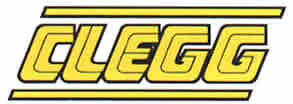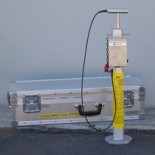 Impact Soil Tester
Impact Soil Tester 
|
|
|
|
The Clegg Hammer has wide application to testing for design, construction or evaluation in the areas of pavements, earthworks and turf surfaces. The impact of the hammer causes an electronic output to a digital display. The output is based on the peak deceleration of the hammer’s impact with the surface in units of tens of gravities. Four successive blows of the hammer on the same spot constitutes one test, called a Clegg Impact Test (CIT). The CIT provides a soil strength/stiffness - or "hardness" - parameter known commonly as Clegg Impact Value (CIV), also known as Impact Value (IV) - (refer to ASTM Standard D 5874) - and notation is as CIV, CIV/M, CIV/L, and CIV/H for the "Standard," "Medium," "Light," and "Heavy" Hammers. The Clegg Impact Soil Tester is being used worldwide by road authorities, local government, consulting engineers, contractors, construction & mining companies, testing laboratories, universities, research institutes, the military, etc. Principally regarding CIV obtained using the Standard 4.5 kg Clegg Hammer: For Pavement Design- CIV is similar in concept to the California Bearing Ratio (CBR). CIV may be used as an alternative to CBR in both laboratory and field on unsoaked samples. CIV may be converted to a Clegg Hammer Modulus (CHM), analogous to an elastic modulus. For Construction- CIV provides a means of process control by monitoring the effect of roller passes and checking variability. Percent compaction may be estimated by determining the CIV (termed an "As Compact Target CIV") needed to achieve the desired density level for the given material and field moisture content. For Evaluation- CIV may be used to ensure adequate basecourse strength before sealing or proceeding with subsequent layers. It may also be used to monitor the effect of environmental changes and to investigate pavement failures. Low Cost- An Impact Test requires only one person and less than half a minute to perform using portable apparatus. The Impact Value is displayed directly and instantaneously on the Hammer’s meter upon completion of the test. The Clegg Impact Test can be performed by the supervisor himself or by the man on the job. Sensible application at the time of construction can reduce the risk of costly overworking or reworking. Information- Information in the form of Papers, Reports,Technical Notes, Newsletters, etc. covering the theoretical basis, applications and correlation with other soil property tests such as "Proctor Density", Texas Class Number (TCN), Benkelman Beam, California Bearing Ratio (CBR), Falling Weight Deflectometer (FWD) and Modulus (Youngs or elastic Modulus) are available. |
|
|